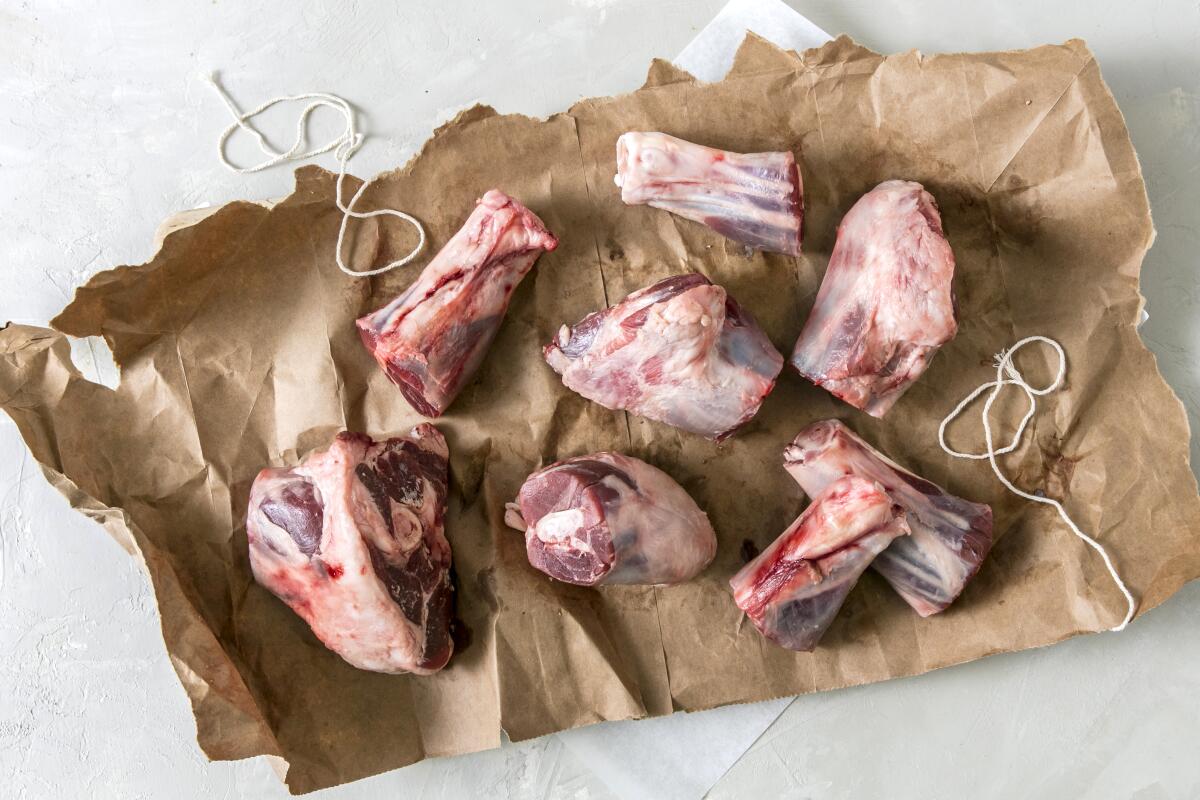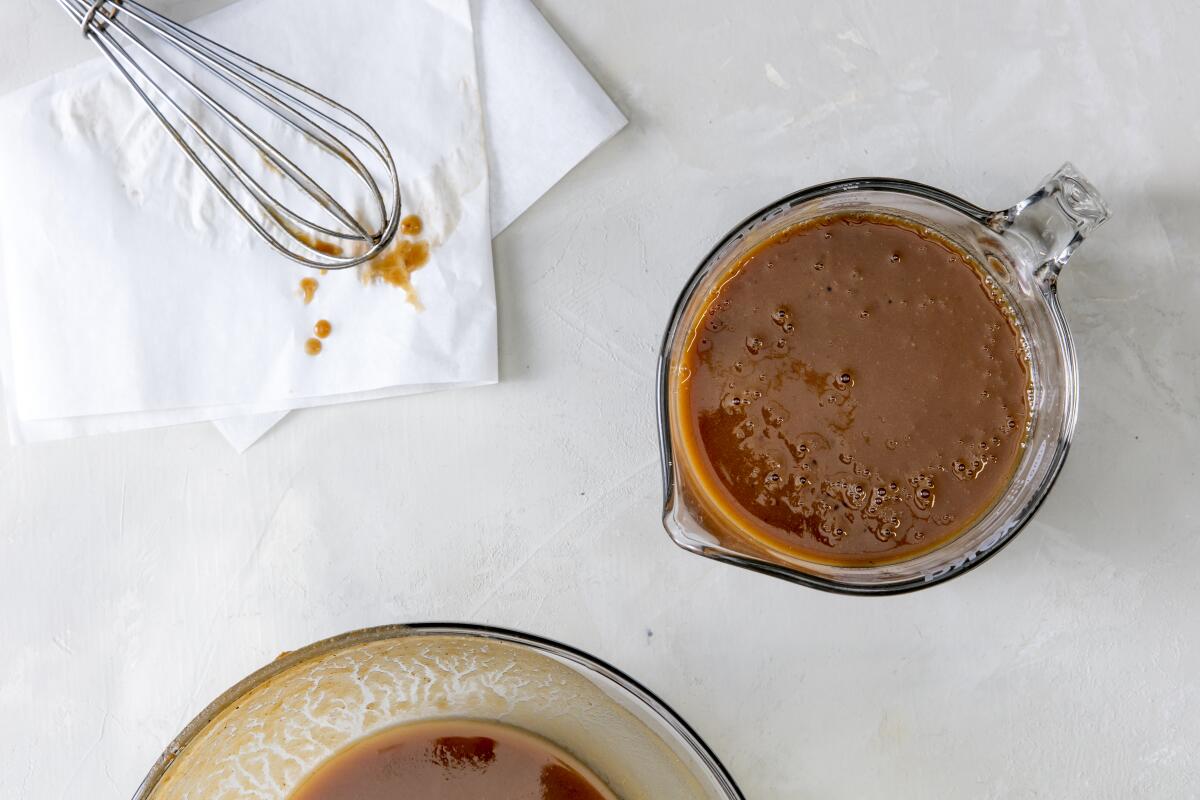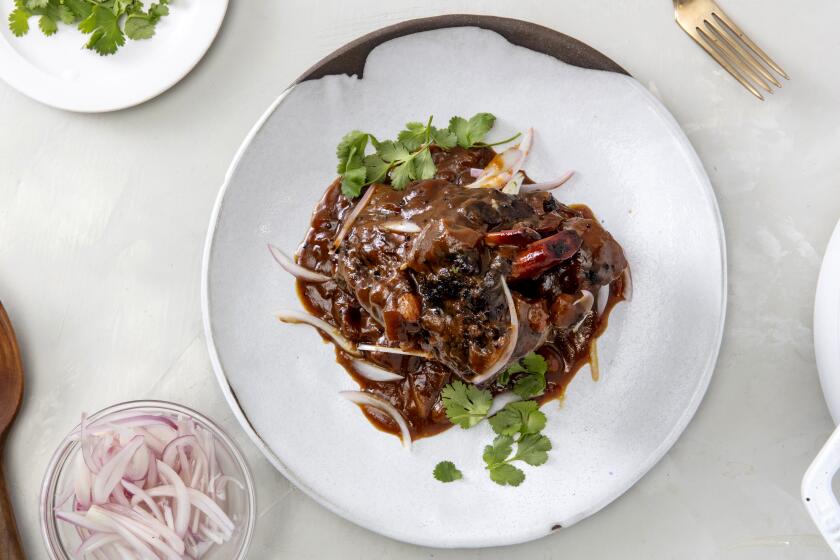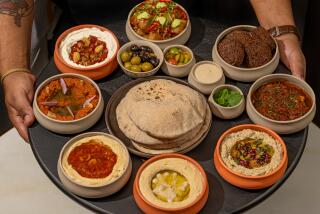A deep lamb cut that bests the fancy chops

How to Boil Water
With so many of you having to stay home and cook for the first time — ever or more than you have in a long time — we get that it can be overwhelming to have to cook all your meals from scratch. So we’re here to get you started.
Each day we’re going to post a new skill here and go in detail about how to do it — a resource for cooking basics so you can get food on the table and get through this.
A series of simple tutorials for making some basic recipes at home.
Lesson 47: Lamb shanks
Now that more and more cooks are turning to cheap cuts of meat to stretch their dollar and cook meat that ain’t beef, it’s time to learn something that many professional cooks have known for a while: The cheap cuts taste the best. And there’s no better cheap cut for my money than lamb shanks. They’re incredibly flavorful and are the easiest cut to cook well — no futzing around with tiny portions and precious lollipop ribs.
Lamb has always been a tough sell for the majority of American cooks because it has a flavor that is stronger than that of the corn-sweetened beef many in this country are used to eating. It has a bombastic flavor that can’t be hidden, so don’t even try.

I like to use that quality as an excuse to throw an arsenal of strong flavors into one pot and make a dish that really announces its presence. Plus, it makes plenty for leftovers for meal prepping, which is becoming more necessary as dishwashing fatigue sets in.
To balance the lightly gamey flavor of lamb, I like to stew it in one of my favorite ingredients, tamarind. I’ve long been a fan of using tamarind mixed with sugar and spices in Indian-style chutney to eat on pretty much everything, and its tartness is exactly the foil to lamb’s richness.
“In Asian cooking, tamarind is treated just like lemons are in Western cuisine — for its ability to introduce a sour taste to food,” writes my friend Nik Sharma in his profile of the ingredient in TASTE. In fact, tamarind is used all over the world in this way. In India, it’s used in curries and in condiments like chutney for serving with street food like samosas and vada pav. In Thailand, it’s used as a marinade for grilled seafood and stir-fries. One of the most popular dishes in the Philippines, sinigang, gets its distinctive sourness from the fruit. In Senegal and other parts of East Africa, it’s used to make a sweetened ade called dakhar, which is the Wolof word for “tamarind” and, not coincidentally, where the Senegalese capital of Dakar gets its name. And in Mexico, its tartness is used in meat marinades, raspados and aguas fresca and my favorite candy on Earth, Pulparindo.

I use pure tamarind pulp — not “concentrate” or “sauce” — and dilute and season it myself so I can control the amount of sugar and spice. Smoked paprika, fennel seeds, mustard seeds and fresh serrano chile round out this dish with strong flavors that magically blend harmoniously with the tamarind and lamb after a couple of hours braising in the oven (don’t worry, if you don’t want to heat the oven now, there’s an Instant-Pot variation too).
It’s a strategy that takes the cheapest, most delicious cut and makes it so flavorful and easy to cook, you’ll wonder why you ever settled for steak.
Sticky-Sour Tamarind Lamb Shanks
More to Read
Eat your way across L.A.
Get our weekly Tasting Notes newsletter for reviews, news and more.
You may occasionally receive promotional content from the Los Angeles Times.













